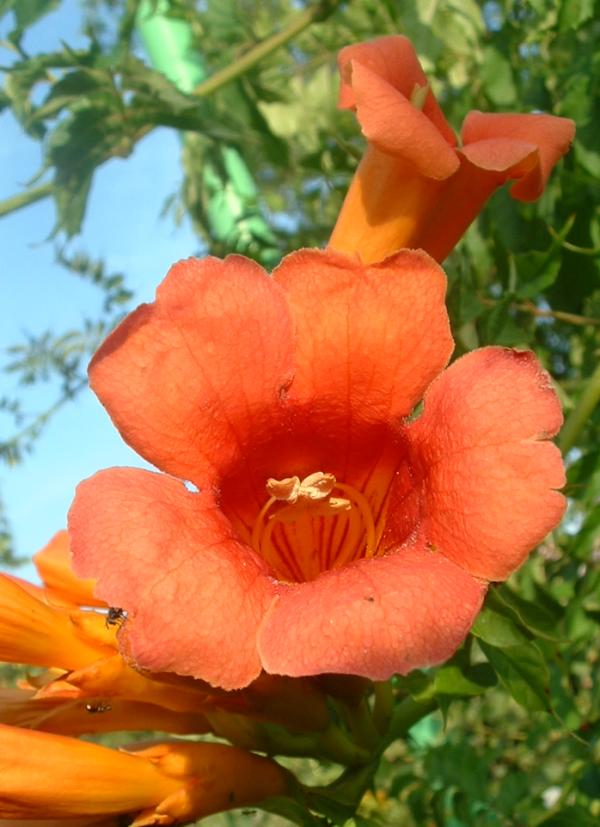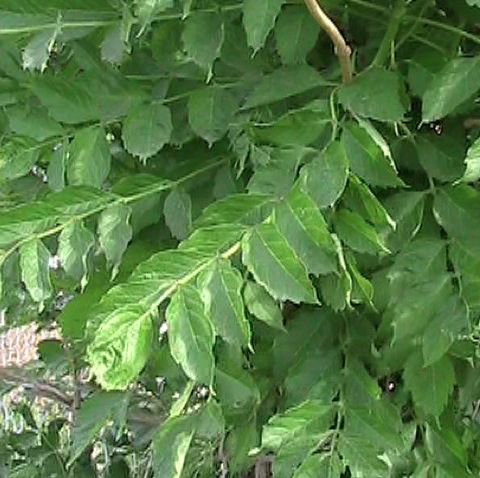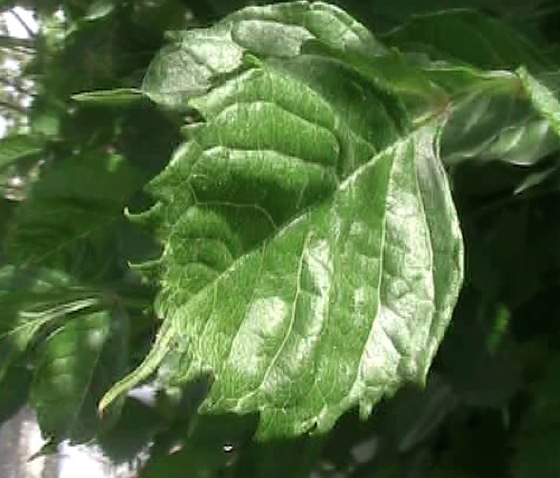| PSC 2620: Woody Trees and Shrub | Course Home | Week 4 |
Campsis radicans - Trumpet Vine or Trumpetcreeper
Plant Viewer
 |
 |
| Trumpet Vine is a vigorous woody vine that climbs with holdfasts. Image: Wikipedia | Large, tubular flowers bloom during the summer. They emerge in clusters and are very showy. Image: Wikipedia |
 |
 |
| The leaf is oppositely compound, with 9 to 11 leaflets per leaf. Each leaf can measure over a foot long. | Each leaflet is ovate and irregularly toothed. . |
Plant Description
Campsis radicans has been described as a litmus test for gardeners. Dirr says of Trumpet Vine: "If you cannot grow this: give up gardening." While this is an overstatement of the vigorous nature of this vineCampsis radicans, it is not far from the truth. Trumpet Vine will grow in basically any soil condition, with plenty of moisture or in scorching drought. In ideal conditions it will sucker profusely and it is an able climber, with clinging holdfasts that enable to climb rapidly and securely. At maturity it can grow in excess of 30 feet in length.
The leafs are oppositely compound, with 9 or 11 leaflets per leaf. Each leaflet is ovate in shape, up to 4 inches long, and coarsely toothed. The color is dark green, but may turn a more lime green in full sun in our climate. The underside of the leaf is slightly pubescent.
The most noticeable feature of Trumpet Vine, and from whence it gets its name, is the bright tubular flowers that are very showy throughout summer and into early fall. They are 2.5 - 3 inches long, with a little over an 1 wide, with some cultivars being much larger. The flowers are red or orange in color, born in large clusters, and very profuse.
Landscape Use
Use as a screen along a fence or to climb up and over a trellis or arbor. It can be used to soften the wall or edge of a building, but it may cause damage to masonry in the long-run. Its high tolerance of salt makes it an ideal choice for next to walks or roads, where winter salting is performed for snow removal. It is also a good selection for particularly difficult growing locations.